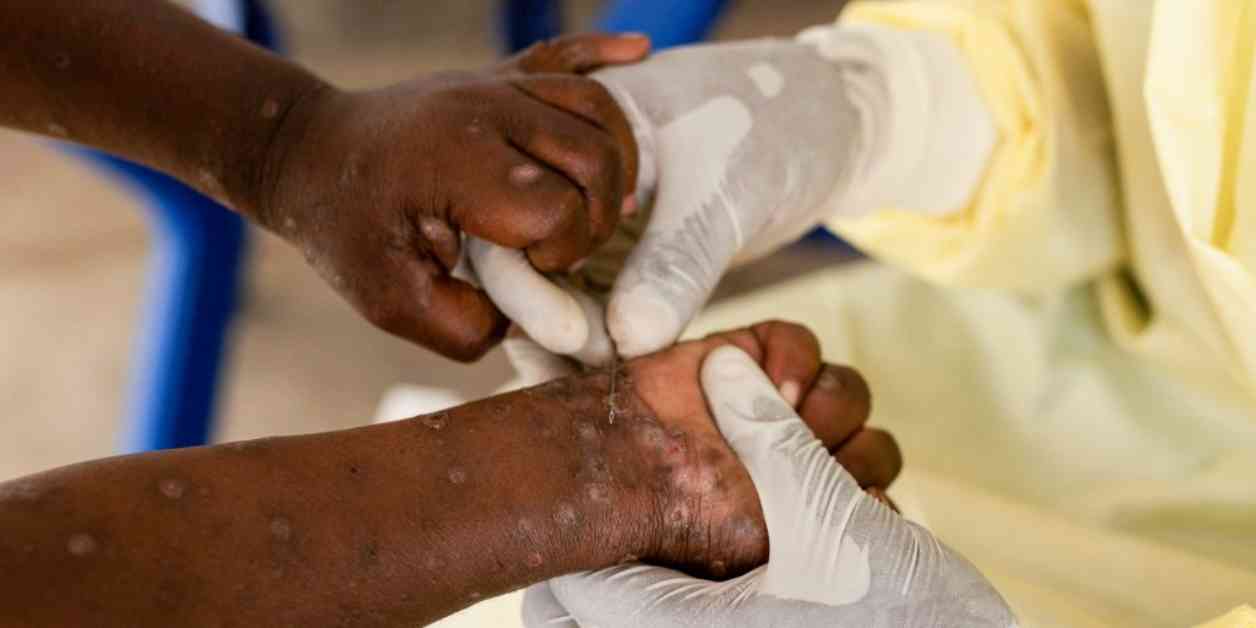The World Health Organization recently declared mpox a global public health emergency for the second time in two years, signaling the urgency of the situation. While this may seem like a case of déjà vu, there are significant differences between the current strain causing concern and the one that spread in 2022. Mpox, previously known as monkeypox, is a viral infection characterized by painful lesions and is spread through direct contact with infected individuals, animals, or contaminated items like clothing or bedding.
### Clade I vs. Clade II: Understanding the Differences
Mpox is classified into two distinct groups: clade I and clade II. The 2022 outbreak was caused by clade II, resulting in approximately 100,000 cases worldwide. However, the current strain of clade I has now spread internationally, beginning in January 2023 in the Democratic Republic of Congo and reaching 12 other countries in the region.
Recent developments have shown the international spread of clade I, with Sweden confirming the first known infection outside Africa. Health authorities in Pakistan also identified a case of mpox but have yet to determine the strain. Clade I is known to be more transmissible and potentially more severe than clade II, raising concerns among infectious disease experts about further international transmission.
Anne Rimoin, an epidemiology professor at the University of California, Los Angeles, emphasized the importance of learning from past experiences, stating, “We should have learned a lesson from 2022 that an infection anywhere is potentially an infection everywhere.”
### Modes of Transmission and Spread
Mpox has historically spread through close personal contact, contact with contaminated materials, and contact with infected animals. In the 2022 outbreak, clade IIb was primarily transmitted through sexual contact, particularly among men who have sex with men. In the recent outbreak in the Democratic Republic of Congo, clade Ib has also been spreading through sexual contact among female sex workers and men who have sex with men.
Research suggests that an outbreak in an eastern mining town in Congo may be linked to professional sex work in bars. However, the virus is also transmitted through exposure to animals and within households. Dr. Stuart Isaacs of the University of Pennsylvania highlighted the challenges of surveillance in the affected regions, making it difficult to fully understand the modes of transmission for clade I.
Early evidence indicates that clade Ib possesses certain properties that facilitate person-to-person spread. The evolving nature of the virus raises concerns about its ability to adapt and spread more readily in different populations.
### Severity of Recent Cases
In the past, outbreaks of clade I have been more deadly than clade II, with mortality rates as high as 10%. However, recent outbreaks have shown lower death rates, with just over 5% of cases resulting in fatalities in the current outbreak in Congo. Comparatively, clade II outbreaks in Africa typically had a mortality rate of around 1%, with only 0.2% of cases from the 2022 global outbreak proving fatal.
Anne Rimoin emphasized that the severity of the disease could be influenced by various factors such as the route of transmission, individual immune responses, and the source of infection. Marc Siegel from the George Washington School of Medicine and Health Sciences noted that underlying health conditions in the Democratic Republic of Congo may contribute to the current case fatality rate, suggesting that improved access to healthcare resources could lower mortality rates.
Vaccines for mpox are readily available in the U.S. following a major rollout effort in 2022. The Department of Health and Human Services stated that two doses of the vaccine or prior infection with clade II should offer protection against severe illness from clade I.
### Symptom Variations Between Clades
Symptoms of mpox can be challenging to differentiate between the two clades. The illness typically begins with a rash that progresses to small bumps on the skin, followed by blisters filled with whitish fluid—characteristic of the disease—before scabbing over. Other symptoms may include fever, headache, muscle aches, back pain, low energy, and swollen lymph nodes.
In severe cases, individuals may develop larger lesions, secondary bacterial infections, pneumonia, heart inflammation, or brain swelling. Immunocompromised individuals are at higher risk of hospitalization and death due to atypical symptoms. Historically, mpox lesions appeared on specific areas of the body, but during the 2022 outbreak, lesions were more diverse and pronounced in different regions due to the mode of transmission at the time.
Recent cases in Congo have shown a trend of lesions around the genital region, prompting further investigation into potential changes in the virus’s behavior. Amira Albert Roess, a professor of global health and epidemiology at George Mason University, highlighted the need for thorough research to understand these emerging patterns.
As the global community faces the challenges posed by the evolving mpox virus, continued surveillance, research, and collaboration are essential to effectively combat the spread of the disease. By understanding the differences between clade I and clade II, identifying modes of transmission, and monitoring symptom variations, healthcare professionals can better respond to the current public health emergency.
The significance of early detection, prompt intervention, and comprehensive vaccination efforts cannot be understated in mitigating the impact of mpox on populations worldwide. With ongoing research and coordinated efforts, the global community can work towards containing and ultimately eradicating the threat posed by this viral infection.

















